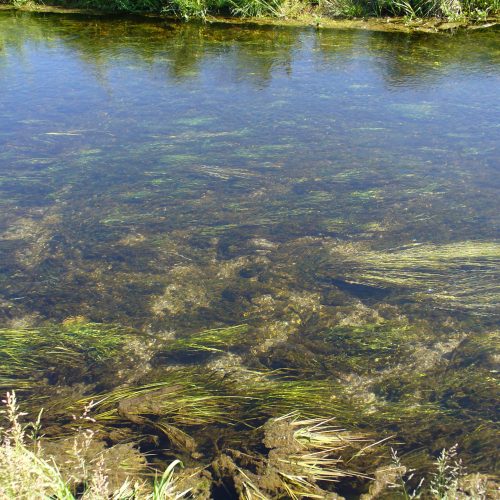As our population increases so does the diffuse (nonpoint) sources of pollution. Septic systems, stormwater runoff, agriculture and fertilizers contribute excessive nutrients (nitrogen & phosphorus) that enter our rivers and streams feeding nuisance algae blooms that harm aquatic habitat.
What is nonpoint source pollution?
Nonpoint Source Pollution (NPS) is caused by rainfall or snowmelt moving over and through the ground, it picks up and carries natural and human-made pollutants, depositing them into lakes, rivers, and groundwater.
Sources of nutrient pollution
– Wastewater from septic systems and municipal treatment facilities
– Excessive landscaping fertilization (lawns, shrubs, trees)
– Livestock
– Domestic pets
What is the connection between excess nutrients and algae?
Excess nutrients (nitrogen and phosphorus) results in excess algae in streams, which in turn negatively affects both aquatic life and recreation. Increased levels of algae may be beneficial to aquatic life in small amounts, but too much algae lowers oxygen levels, which can harm fish and their main food source, stream insects or aquatic macroinvertebrates.
Recreational impacts from excessive amounts of algae on stream bottoms can affect fishing, swimming, boating, and general aesthetics. In addition, excess algae may adversely affect human health from algal toxins in drinking water.
Effects of excessive algae on stream aquatic habitat
– Reduces sensitive species diversity (aquatic insects, plants, fish)
– Threatens spawning habitat
– Promotes accumulation of sediment
– Promotes retention of pathogens such as E-coli





